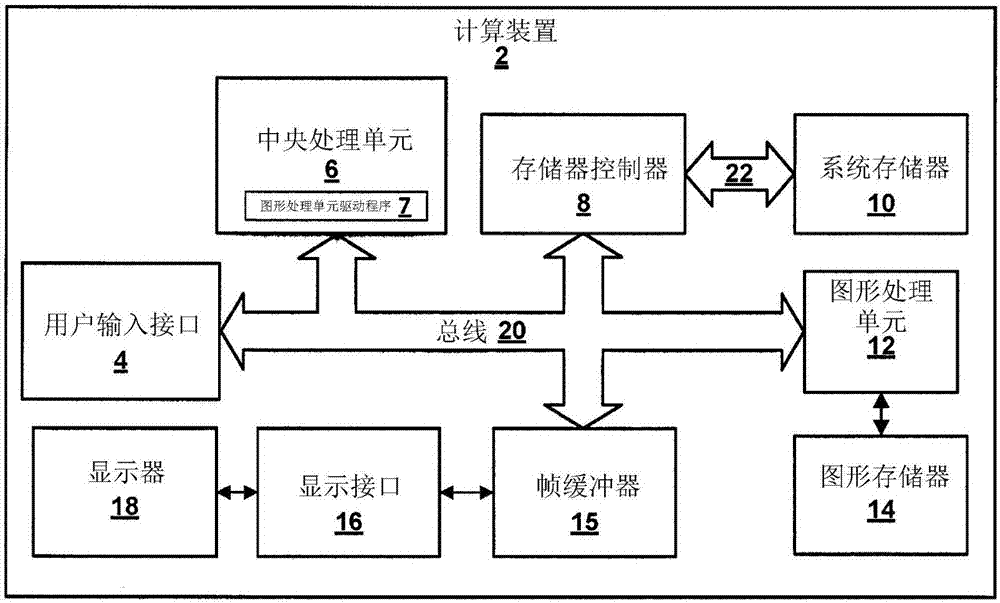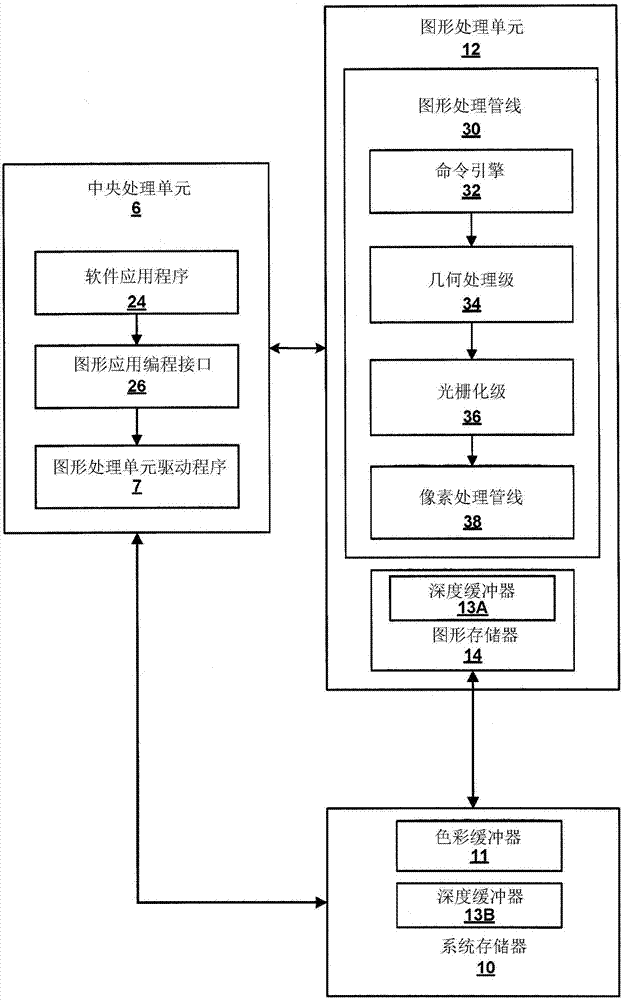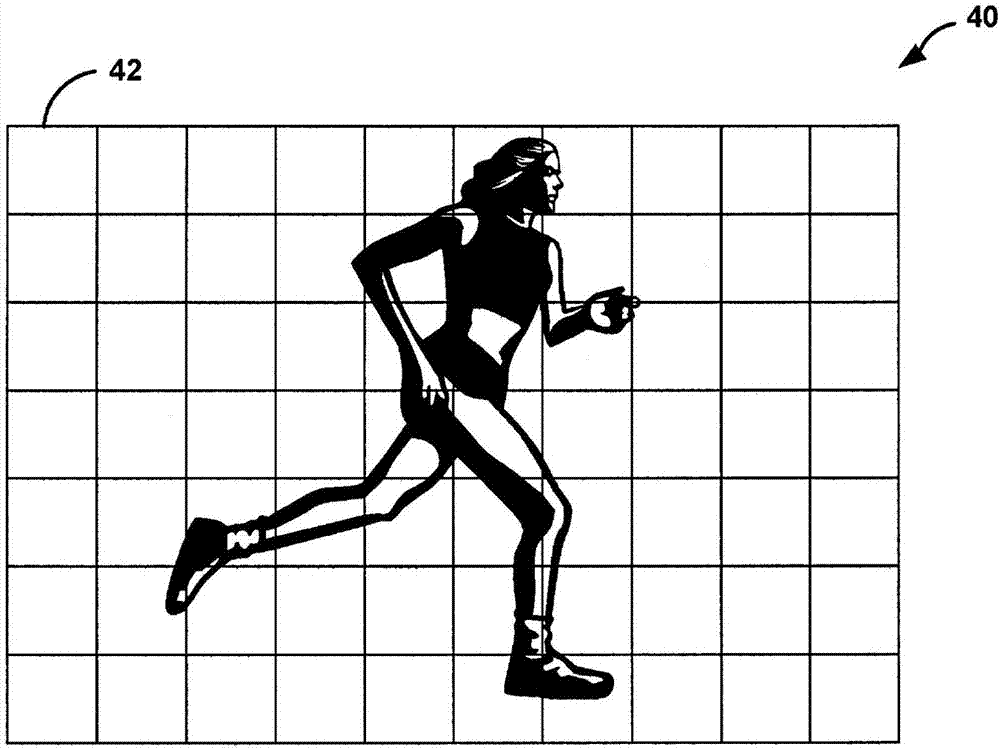Hybrid rendering in graphics processing
A technology of graphics processing and graphics processing unit, which is applied in the details of image processing hardware, image data processing, image memory management, etc., and can solve the problems of complexity and difficulty of 3D graphics rendering technology.
- Summary
- Abstract
- Description
- Claims
- Application Information
AI Technical Summary
Problems solved by technology
Method used
Image
Examples
Embodiment Construction
[0016] This disclosure relates to techniques for graphics processing, and more particularly, techniques for mixed rendering modes. Current graphics rendering systems typically render scenes using a binned rendering mode (sometimes called tile-based rendering) or a direct rendering mode. In many examples, a graphics processing unit (GPU) may be configured to selectively perform both binned rendering and tile-based rendering. In bin rendering, one frame of a 2D or 3D scene is rendered by breaking the frame into smaller parts (eg, rectangular bins or tiles) and rendering each of these bins separately. Binned rendering is useful in applications where very little dedicated fast graphics memory (GMEM) is available, such as for mobile applications. The size of the bin can be configured to represent the amount of storage available in GMEM. For example, if a GMEM is capable of storing 512kB, the bin size may be configured such that the pixel data contained in the bin is less than or ...
PUM
 Login to View More
Login to View More Abstract
Description
Claims
Application Information
 Login to View More
Login to View More - R&D
- Intellectual Property
- Life Sciences
- Materials
- Tech Scout
- Unparalleled Data Quality
- Higher Quality Content
- 60% Fewer Hallucinations
Browse by: Latest US Patents, China's latest patents, Technical Efficacy Thesaurus, Application Domain, Technology Topic, Popular Technical Reports.
© 2025 PatSnap. All rights reserved.Legal|Privacy policy|Modern Slavery Act Transparency Statement|Sitemap|About US| Contact US: help@patsnap.com



